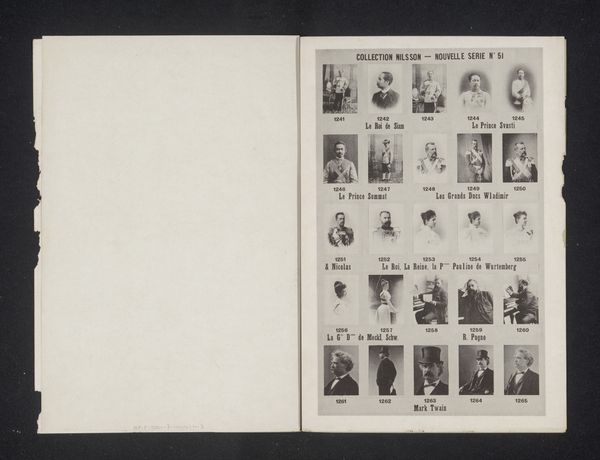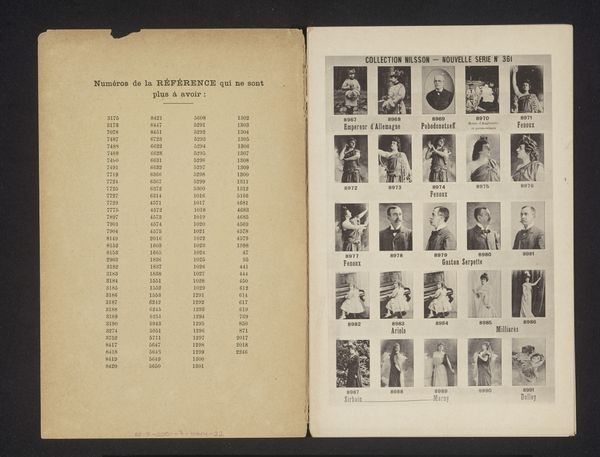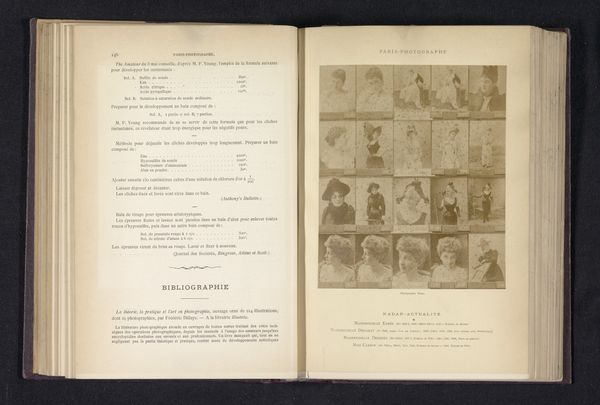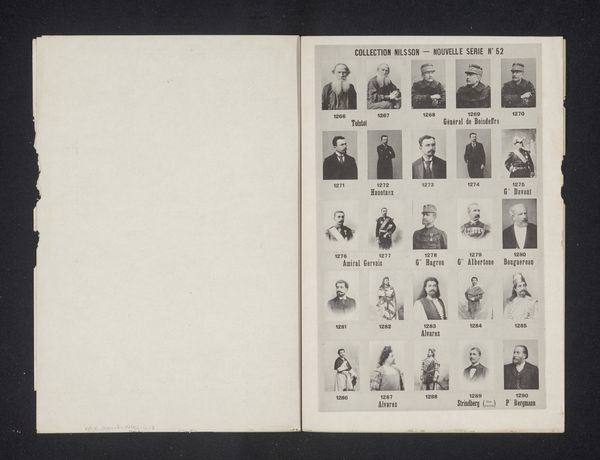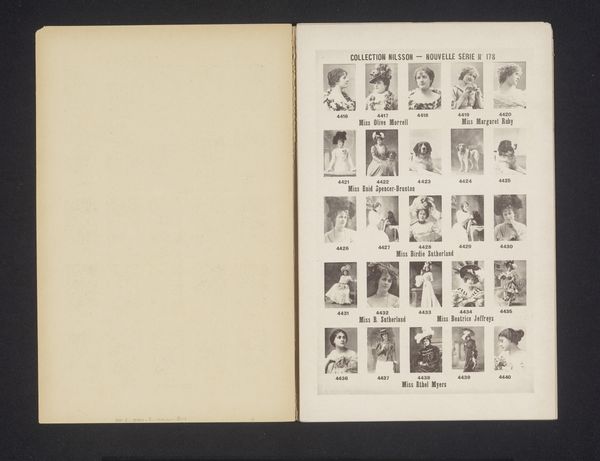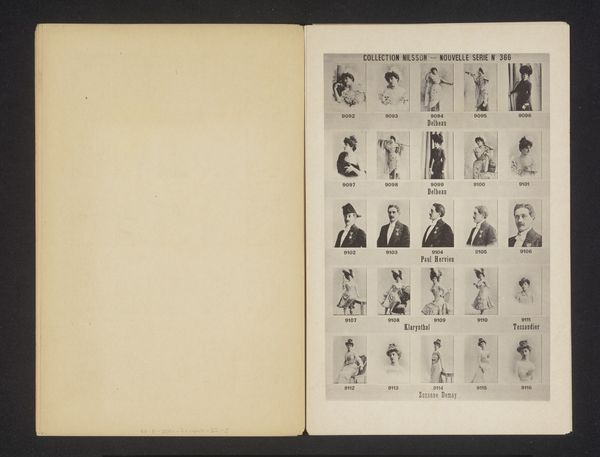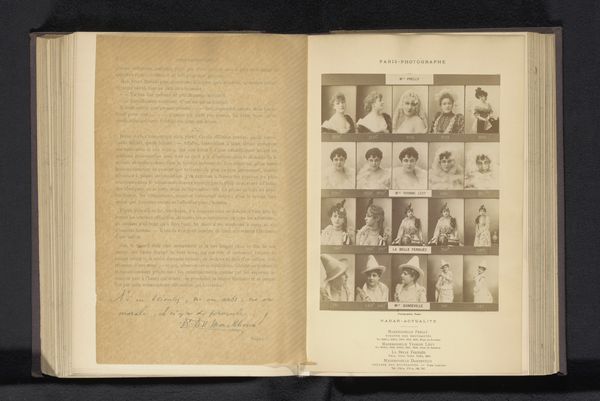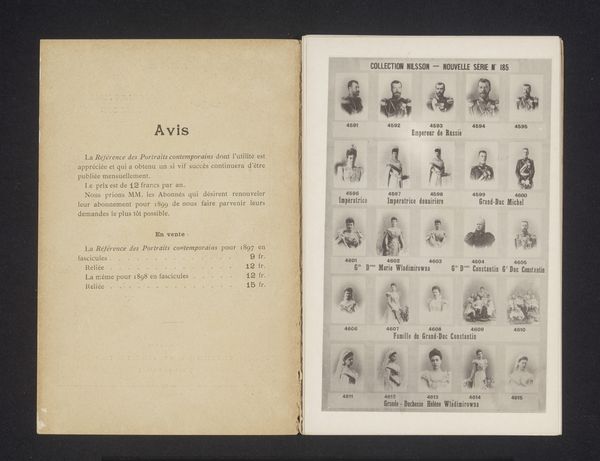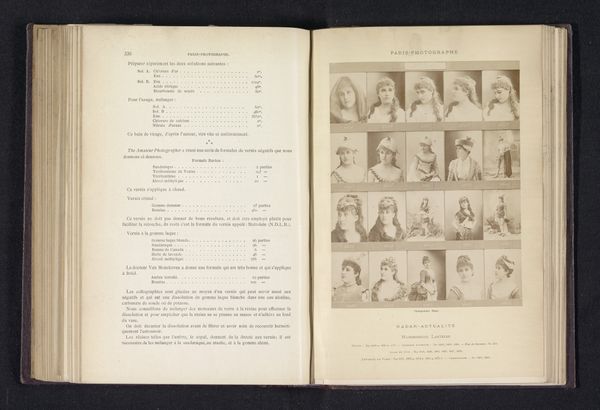
print, photography, albumen-print
#
portrait
# print
#
photography
#
academic-art
#
albumen-print
Dimensions: height 238 mm, width 150 mm
Copyright: Rijks Museum: Open Domain
Curator: It's striking how the albumen print medium imbues these postcard portraits, dating from before 1900, with a palpable sense of gravity and antiquated beauty. There's something about that sepia tone and slight softness that elevates even the most ordinary pose. Editor: The tonality absolutely shapes my immediate experience of it; there’s a distancing effect that pulls me into another era. It’s like peering into a forgotten photo album, where each face represents a vanished narrative. Curator: Yes, the uniform composition creates a sort of taxonomy, a study in physiognomy almost. Notice how each figure is presented within a framed rectangle. The faces, captured with varied lighting and posing, nevertheless adhere to the strictures of photographic portraiture. Editor: It's really fascinating when you see them collected together, almost as a group of 'important' historical figures within their time. They look like figures representing societal achievements and aspirations in an era on the brink of modernity, poised at the turn of the century. I feel I know quite a bit about society just looking at this one collection. Curator: In its original context, this was undoubtedly designed as a product— "Cartes postales illustrées", as the open leaf declares. What significance can we infer from the juxtaposition of historical personages like George I of Greece and literary figures alongside ordinary citizens, offered as a set of purchasable cards? Editor: I agree that the format is important here. It suggests an emerging culture of celebrity and a democratizing impulse within portraiture, even if somewhat commercial. Consider this ‘Collection Nilsson’ as an early form of image distribution, contributing to public consciousness of societal leaders as well as personalities outside political and economic power structures. Curator: I wonder, how much did choices regarding light, pose, and set serve to perpetuate existing power relationships and stereotypes? Take for instance, Francois Coppee. Are we invited to engage critically with such presentation? Editor: It definitely invites critical discussion, not least for the selection process of each person represented in this manner, within that 'Grand choix' mentioned in the album. Curator: It makes me reconsider photographic objectivity and intention. Editor: Indeed. The collection offers insights into history and photography.
Comments
No comments
Be the first to comment and join the conversation on the ultimate creative platform.
